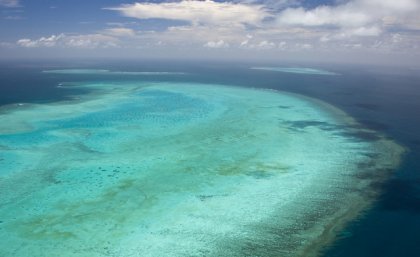
Coral larvae use ocean temperature and the presence of symbiotic algae to determine where they should settle, researchers have found.
Using a range of sensory cues to find a good location improved the coral’s chance of survival, said Dr Eugenia Sampayo from the ARC Centre of Excellence for Coral Reef Studies at The University of Queensland.
“Once in place, corals can’t move, so a poor choice of location increases the risk of death,” she said.
The research found warmer-than-normal maximum water temperatures had a negative impact on the reproduction and survival of some corals.
The researchers wanted to know how a cooler climate, similar to that south of the Great Barrier Reef, would affect coral larvae settlement.
“At colder-than-average ambient temperatures, we found the larvae settled on more exposed surfaces where they were more likely to be damaged or removed entirely by fish,” Dr Sampayo said.
The researchers exposed larvae from coral commonly found on the Great Barrier Reef, Acropora millepora, to several different temperatures; including normal temperatures found on the reef and the cooler temperatures experienced further south.
The study found that under normal conditions, the larvae preferred to settle on surfaces covered in crustose coralline symbiotic algae, but larvae in the cooler water were less likely to choose such a surface, reducing their chance of a successful settlement.
The researchers also examined the influence of dinoflagellates (Symbiodinium), microscopic single-celled organisms that live inside coral tissue once it has settled.
The study’s lead author, Natalia Winkler, said the symbiotic relationship with algae was essential to the survival of corals in tropical oceans.
“Perhaps the most surprising result of this research is that the presence of these symbionts in the water also influences whether the coral larvae settles on the algae-encrusted surfaces or not,” she said.
“The fact that the symbionts can influence larval settlement without actually being inside the coral tissue highlights just how important the symbionts are for corals.”
Dr Sampayo said the results suggested a link between crustose coralline algae and the symbionts.
“If symbionts cluster near favorable locations, the coral larvae kill two birds with one stone by finding a good spot to settle and a concentrated source of symbionts, which are normally sparse in the water,” Dr Sampayo says.
“We have discovered a previously unknown biological control over coral settlement, one that is likely to be influenced by warming oceans and that can change how corals select their lifelong position on the reef.”
The findings are published in the Proceedings of the Royal Society London B journal.
Media: Dr Eugenia Sampayo, +61 (0) 7 3365 2729, e.sampayo@uq.edu.au or Eleanor Gregory, communications mnager, +61 (0) 428 785 895, eleanor.gregory@jcu.edu.au
.jpg)









